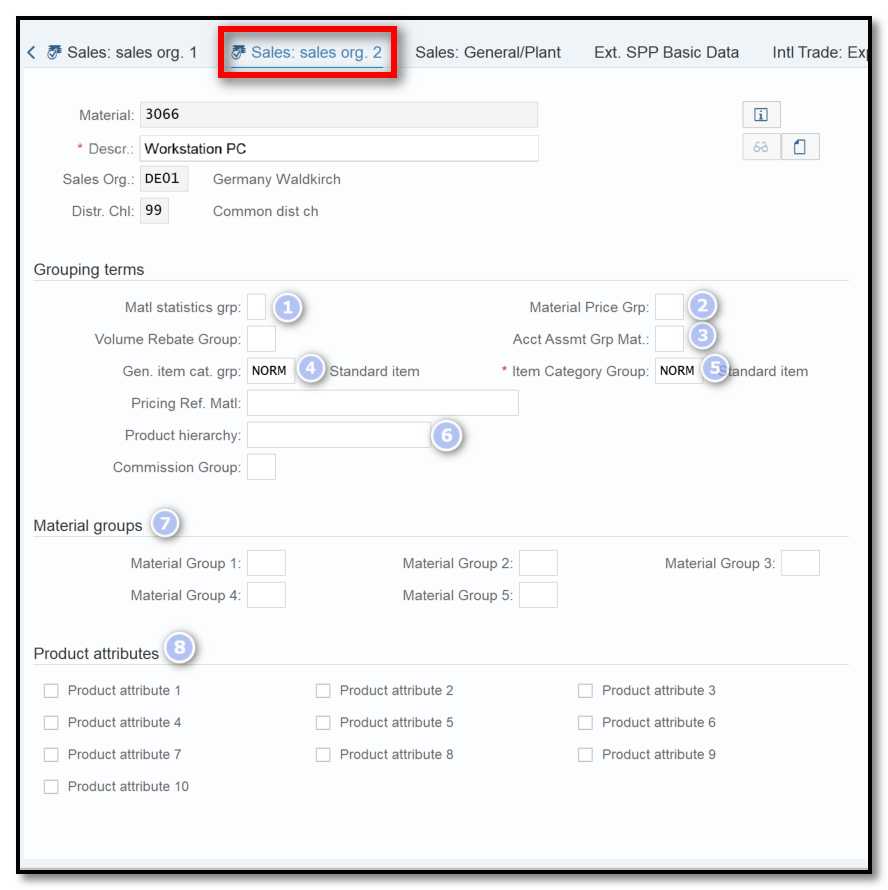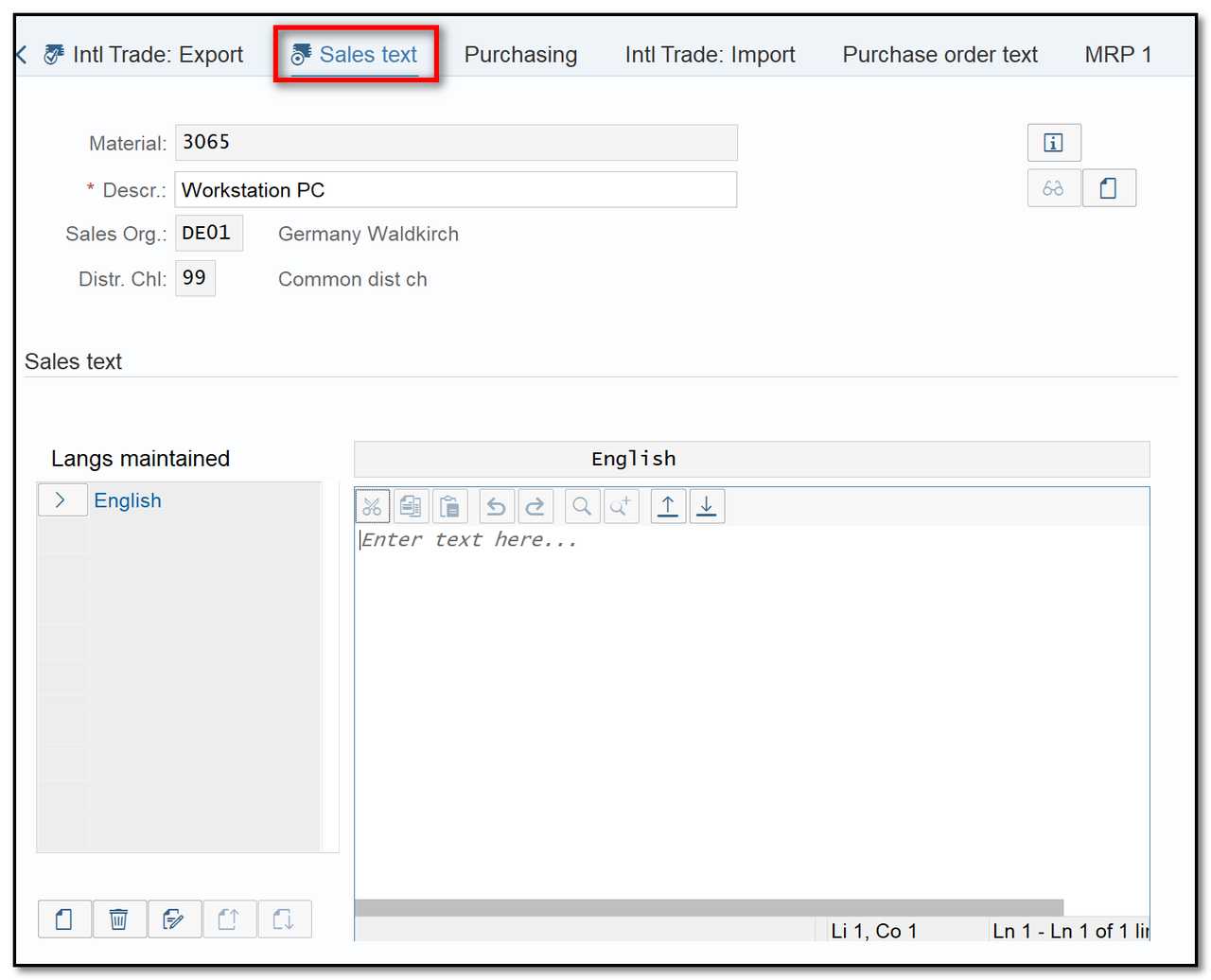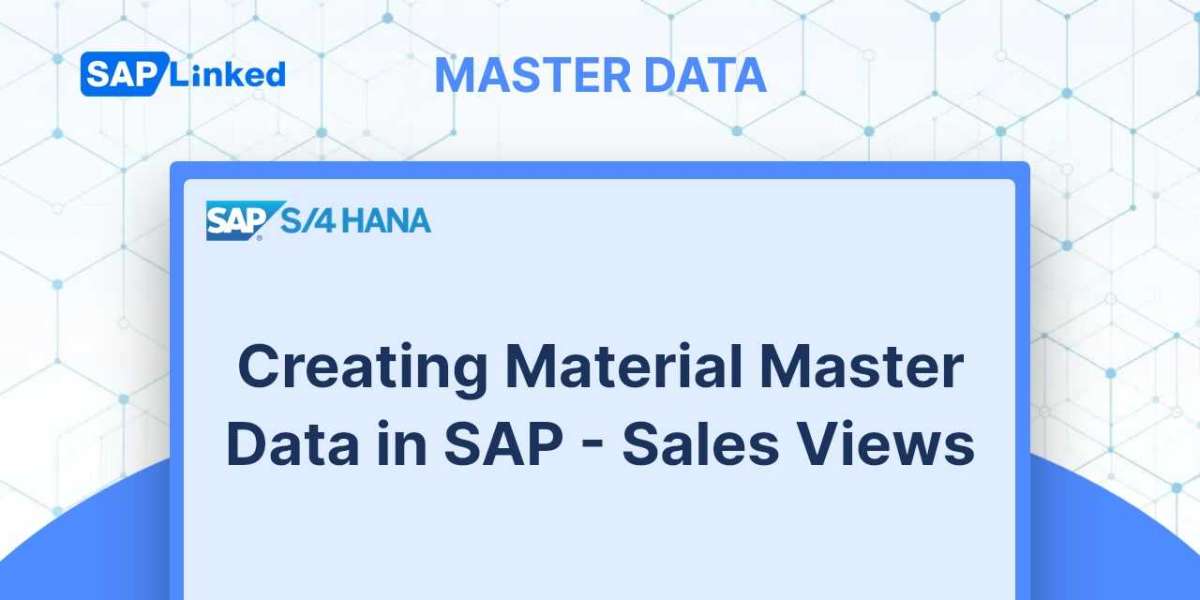
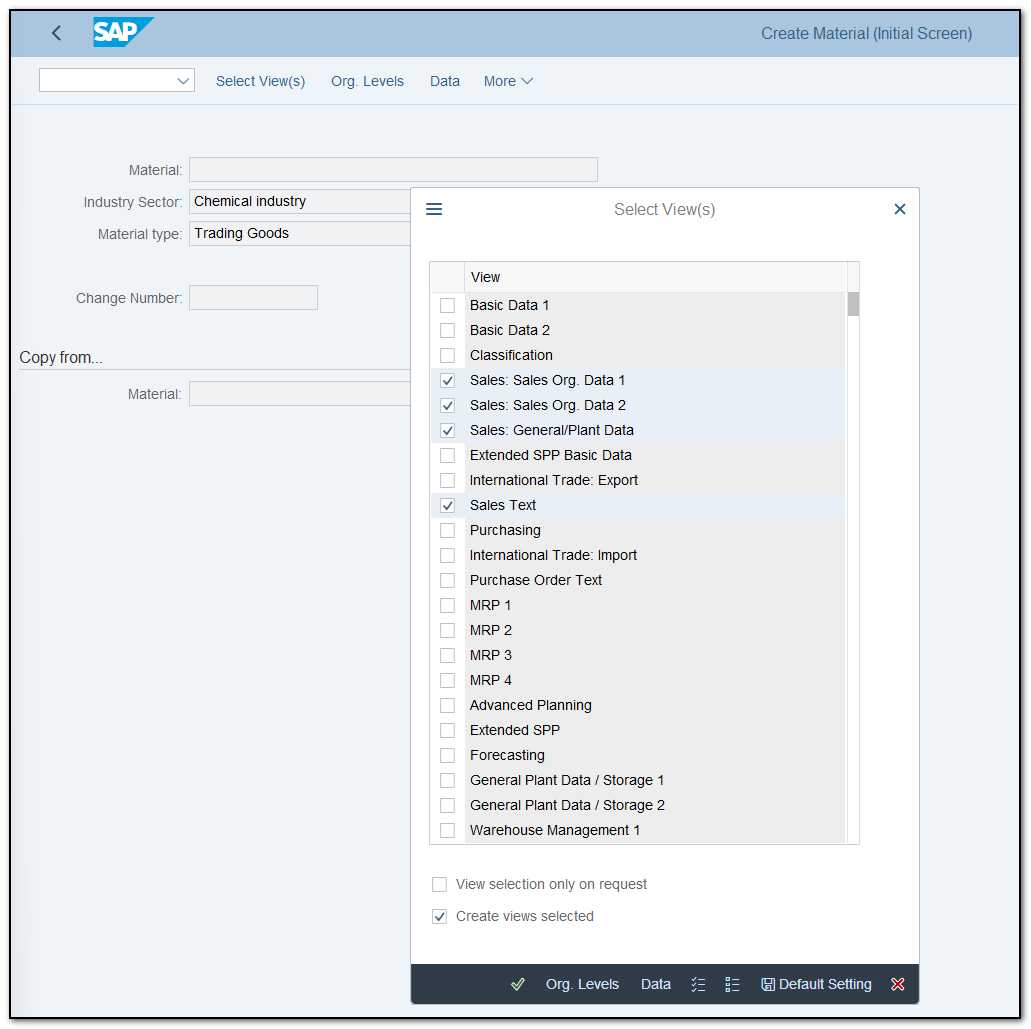

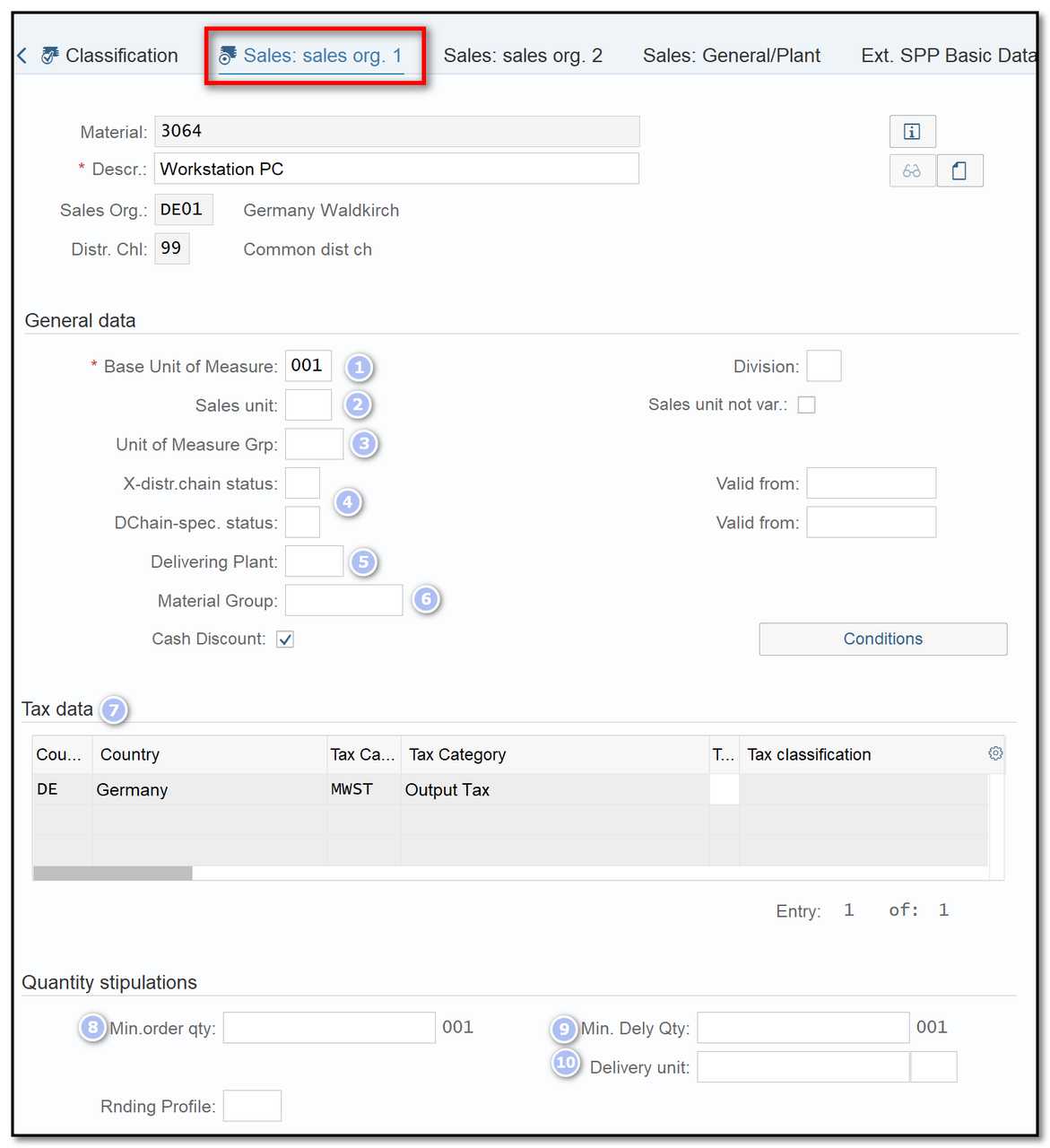
- Base Unit Of Measure (1) This stands for the unit of measurement used to maintain the material stocks. This is a measurement's fundamental unit. The base will be applied to all other units.
- Sales Unit Of Measure(2) The sales unit is the measurement type in which the material is sold. Enter an alternative unit of measurement for sales if necessary here.
- Alternative Unit Of Measure If you use more than one unit of measurement, you should keep track of the alternatives in the Additional Data section of the material master along with how they convert to the base unit. To reach to the Additional Data view, select the Additional Data button.

--Minimum Order Quantity (8) The minimum amount a customer must order for this material is indicated here. The maximum order number may be determined by your company's pricing or marketing strategies.
--Minimum Delivery Quantity (9) The minimum quantity that must be delivered to the customer is indicated below. Constraints on transportation and logistics frequently dictate this.
--Delivery Unit (10) This is the unit in which the item is sent. Only deliveries in multiples of five are permitted if the Delivery Unit setting is set to five pieces (5, 10, 15, .....).
